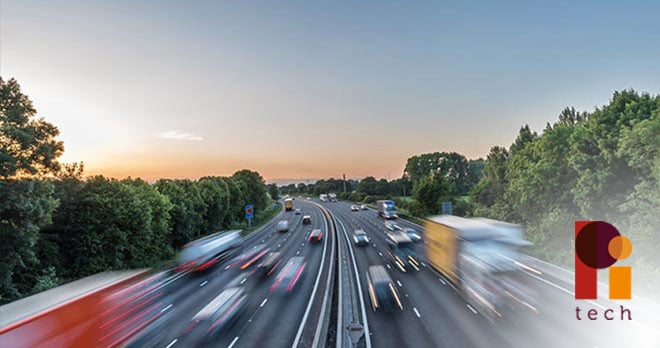Smart motorways – are they really as smart as they claim to be?

You may have heard of smart motorways. They use technology to actively manage the flow of traffic, controlled from a regional traffic control centre. As the Government website states, they “increase the capacity of the road, without the expense and hassle of widening the road, by either temporarily or permanently opening the hard shoulder to traffic”.
It may even surprise you to find out that England already has more than 100 miles of smart motorways with plans for many more to be opened.
The main types of smart motorway remove the hard shoulder from use and either permanently convert it into a fourth lane (otherwise known as All Lane Running or ALR motorways) or control it so as to convert it into a live lane during busy periods (known as a dynamic hard shoulder).
Alternatively you have motorways which are controlled by CCTV operators who are reactive to incidents and can alter speed limits as necessary. You can’t have missed the overhead gantries displaying red crosses or variable speed limits to indicate live lanes or lanes into which you should not drive as they are closed, usually due to an incident.
Highways England operate the thousands of motorway CCTV cameras and the aim is they can alter the matrixes and the overhead gantries as an incident develops; they can not only shut lanes down but reduce or increase speeds limits if they see traffic backing up or clearing to make the motorway run more fluidly.
They were heralded as a fantastic way to beat congestion. However, many in the emergency services and recovery trade, and others who work on the motorways, anticipated they maybe wouldn’t be as good in practice as in theory.
It looks like their concerns are justified, now that smart motorways are being rolled out across the country and there have been more tragic incidents in the news where vehicles have ploughed into the backs of stationary vehicles and motorists or emergency/recovery workers attending them have been killed or seriously injured where they have simply not had the protection of the dedicated hard shoulder.
So, how do they work in practice?
Initially all types of smart motorway had emergency refuge areas every 500-800 metres (some not much bigger than your average layby on an A road) into which broken down vehicles needing recovery could be moved. Alternatively you could be left stranded in a live lane.
However, over recent years the Department for Transport has moved in favour of converting all smart motorways into ALR motorways, so removing any remaining hard shoulders and turning these into permanent live lanes, as well as increasing the distance between refuges.
This has led to significant concerns about road safety, particularly from those who risk their lives daily to attend motorway incidents i.e. the emergency services and recovery/breakdown industry.
A recent RAC driving survey shows ordinary drivers share these concerns, as they are worried about the risks should they break down on what used to be the hard shoulder but is now in most cases a live lane.
From the point of view of the emergency services, amongst their concerns is that removing the hard shoulder makes it more difficult to reach accident scenes as they can’t get through the traffic. The solution currently in use is to cause further disruption by closing the opposite carriageway to allow emergency services to attend.
This is the same from the recovery/breakdown point of view. However they are also reliant on a broken down vehicle being in the right position for them to pull up safely, either to shield that vehicle whilst they work on it or load it from in front. They also do not have the freedom of space as you would on the old hard shoulders, which gave them a run up from a standing start to match the speed of passing traffic and get back into the live traffic lane; it's enough of a hassle in a car, but imagine trying to do it in a recovery lorry with a loaded vehicle increasing your weight and slowing you down.
A further disadvantage is that they make it more difficult for the Police to easily and safely pull over drivers who have committed offences.
The future of smart motorways
MPs and the Campaign for Safer Roadside Rescue and Recovery (CSRRR) are now calling for a halt to the roll-out of more smart motorways until these legitimate concerns are addressed, and for better safety measures to be put in place. However, it remains to be seen if technology wins the day and if, now they are with us, smart motorways are simply here to stay with their inherent faults.
All we can do for now is increase our awareness not only of our own safety when driving on these motorways, but also those of other drivers and emergency and recovery workers, by paying constant attention to what the overhead signs say, do what they’re telling you to do e.g. move lanes or slow down, and hope that we never find ourselves in the situation where we’re stranded without the security of a hard shoulder.
Technology has the power to change the way we view personal injury.
